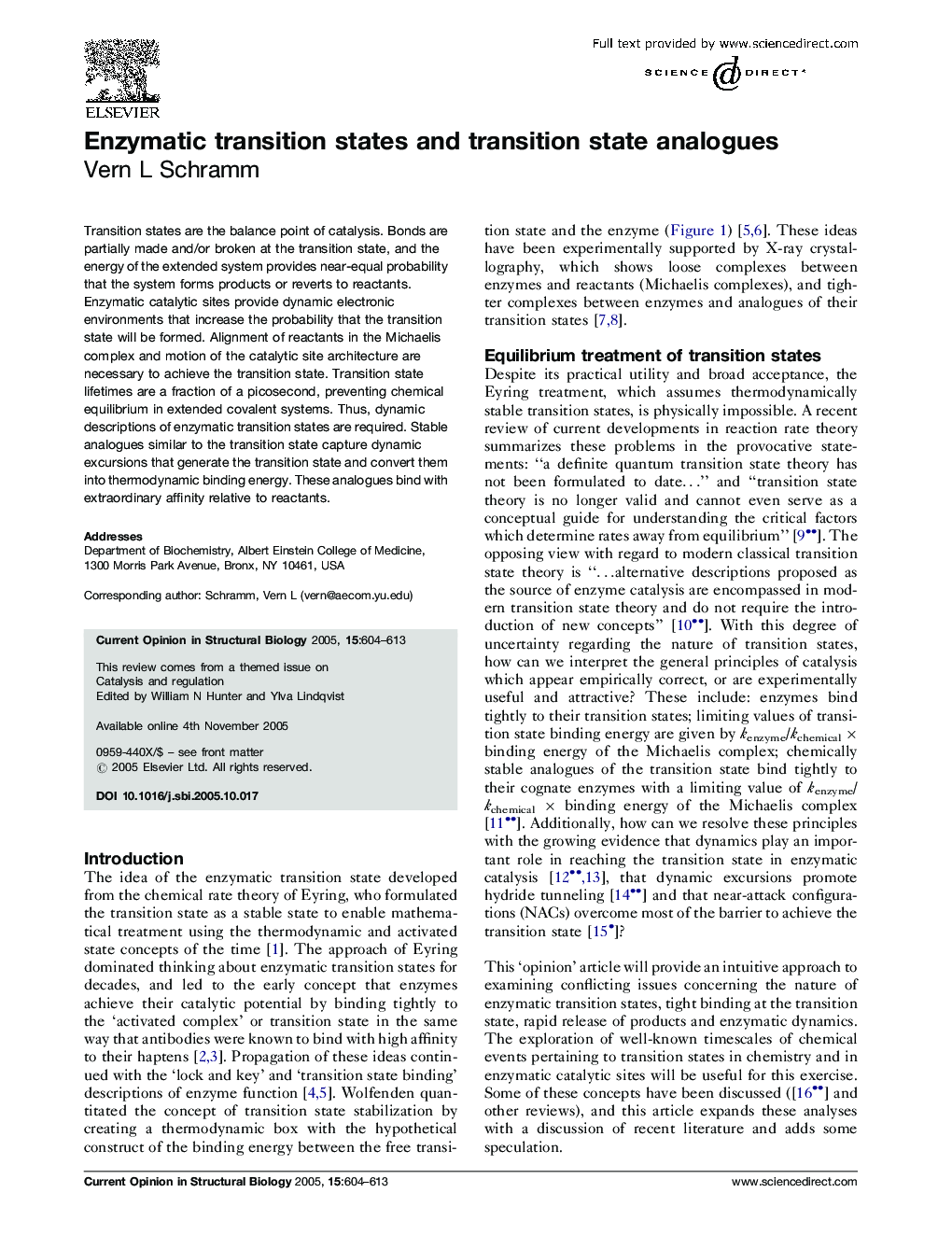| Article ID | Journal | Published Year | Pages | File Type |
|---|---|---|---|---|
| 10822700 | Current Opinion in Structural Biology | 2005 | 10 Pages |
Abstract
Transition states are the balance point of catalysis. Bonds are partially made and/or broken at the transition state, and the energy of the extended system provides near-equal probability that the system forms products or reverts to reactants. Enzymatic catalytic sites provide dynamic electronic environments that increase the probability that the transition state will be formed. Alignment of reactants in the Michaelis complex and motion of the catalytic site architecture are necessary to achieve the transition state. Transition state lifetimes are a fraction of a picosecond, preventing chemical equilibrium in extended covalent systems. Thus, dynamic descriptions of enzymatic transition states are required. Stable analogues similar to the transition state capture dynamic excursions that generate the transition state and convert them into thermodynamic binding energy. These analogues bind with extraordinary affinity relative to reactants.
Related Topics
Life Sciences
Biochemistry, Genetics and Molecular Biology
Biochemistry
Authors
Vern L Schramm,
